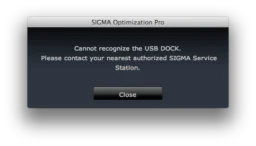I’m still working on my opinion of the Sigma 18-35/1.8. And still tackling AF accuracy and reliability problems. I think (in part thanks to my AF tuning) I’ve got the accuracy issues mostly worked out… it’s not hard to demonstrate really bad AF consistency in synthetic settings, but whenever I actually go out and shoot for real, it mostly just works exactly as intended. That seems to be supporting my hunch that AF accuracy with any lens is less consistent than you’d think, and less important than you might believe.
The reliability is still an issue, though. Every now and again I’ll get a random shot that’s just completely out of focus. Absolutely nothing in the frame is even remotely in focus. It’s like I jammed the focus ring to its limit past infinity. The camera swears it’s in focus at the time. This is very frustrating, because I’m yet to figure out how to predict it, and unless I’m doing a slow scene (e.g. landscapes), I don’t always have time to really check the focus in the viewfinder (or chimp the photos afterwards).
To tackle that, pragmatically, I’ve begun using the focus distance indicator on the lens where possible (i.e. for infinity and/or smaller apertures). That actually works fairly well – the indicator seems to be accurate enough, and infinity seems about spot on (I dare say I have to put it a fraction of a millimetre less than infinity, but I can’t be sure).
The other thing I’m still grappling with is something I never expected. It’s sharp. As in, ow sharp. I expected it to be “sharp”, but I didn’t appreciate it, funnily enough, until I’d seen image after image. In fact, for a little while I was seeing my photos as broken in some way – they looked weird in some fashion I couldn’t put my finger on. It was only when I happened on a set where I’d shot the same landscape at varying apertures that I figured it out. At wide open, f/1.8, it looks what I would previously have called “sharp”. Better than your typical consumer zooms, kit lenses, and crappy old primes. Up there with the Nikon 50/1.8G, easily. But stop down to f/5.6, and it’s beyond sharp. It looks over-sharpened, to my eyes, as if I’d post-processed it crudely. Apparently I’ve been unknowingly used to a bit of softness.
And the reason that looks “weird” is because it completely changes the texture of so many things, when viewed at normal screen sizes (i.e. ~25%). What used to be just a fluffy green tree is now a complex, fine-detailed mass of branches and leaves. Nuanced and much busier. Which isn’t always a good thing, though I hope to get used to it so I can really appreciate this lens.
The irony of this is not lost on me. Too-sharp images. To me, of all people – the compulsive pixel-peeper and guy who takes a hundred and forty photos of a single stationary hawk just to ensure one’s “good enough” (yes, possibly going too far on that specific occasion, I’ll give you that… :D ).
Others might laugh at this. It’s probably not news or any kind of revolution to many photographers. But my money in lenses has gone to long focal lengths, ’til now (and not, alas, the mighty primes – I’m not that rich nor blessed with sufficient upper body strength). I was distantly aware that shorter, “normal” focal length lenses tend to be sharper by nature, but I didn’t realise by just how much.
It’s also strange to me that DxOmark’s sharpness data doesn’t show much difference between f/1.8 and f/5.6. I’d assume I’d got a “soft” copy except that, as noted, f/1.8 is still as sharp as any other lens I own. But then I’d already begun to suspect that the ostensibly linear Y axis on DxOmark’s sharpness profile charts is not correlated linearly with perceived sharpness.
Addendum: I should note that it seems to have a preference for large focal distances. It was very good at a foot or two, as expected, but the aforementioned ow-sharp really only kicks in at tens, perhaps hundreds of feet plus. Though admittedly it may be that the AF inaccuracy is masking its true capabilities at short distances (and I haven’t deliberately tried a f/5.6 near-focus subject yet, but am now eager to).


